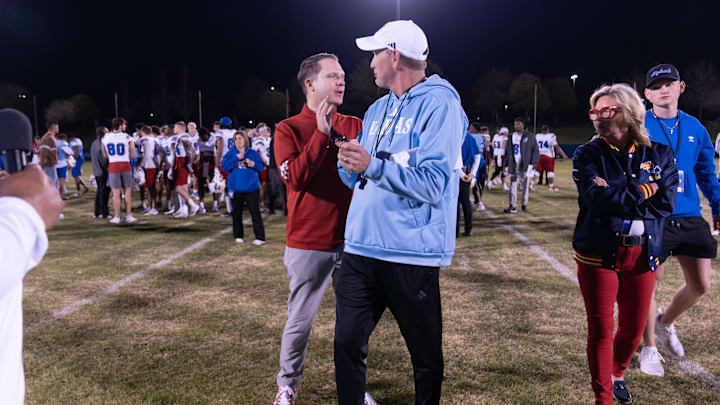Over the weekend, the House agreed to settle on the dispute over NIL back-pay and the NCAA's (specifically the power conferences) ability to directly pay its athletes. There are three main parts to the settlement:
- $2.8 billion in back-pay to ex-athletes
- $20 billion+ in revenue-share to future athletes
- New roster rules and enforcement arm
Yahoo Sports' Ross Dellenger, a recognized expert on the topic, broke down the three pieces of the puzzle perfectly:
The $2.8 billion in back-pay:
- Spread over 10 years
- From NCAA + school distribution (NCAA Tournament money)
- Distribution determined using a formula based on a player’s value
- $2.3B goes to Power Four football and men's basketball players (avg of $120K a player over 10 years)
- Back-payments begin soon (no set date)
What does this mean for Kansas?
Former Jayhawks, like Hunter Dickinson, Aaron Miles, and more, will receive payouts over the next decade. Kansas will pay former athletes certain amounts of money, based on their calculated value, and it will average out to approximately $120,000 per athlete (some making more, some making less).
The $20 billion+ in rev-share over 10 years:
- Schools must stay under an annual cap determined through average of Power Four revenue data
- 1st-year cap $20.5 million per school with escalators to as high as $33M by 2035
- Schools are not required to share revenue
- Rev-share to start July 1
What does this mean for Kansas?
Over the next 10 years, Jayhawk athletes will be able to receive payments directly from the University of Kansas' Athletic Department.
Players will receive percentages of each program's revenue: Dellenger reported that a majority of schools are going to go with a model of 75-85 percent of said revenue to football, 10-15 percent to men's basketball, and 10-15 percent to other sports.
The roster structure:
- Schools permitted to scholarship full rosters under new limits
- Roster limits changed dramatically: in football, the roster is now 105 (from 85); men's basketball is now 15 (13); and baseball is now 34 (11.7)
- Walk-ons still exist. Most schools will not give scholarships to the full roster
What does this mean for Kansas?
Now, the roster limits have risen once again for the "big three" men's athletics programs across the board. With football, men's basketball, and baseball each receiving increased roster limits, Kansas will have the capabilities to bring more players to the program, but not every Jayhawk will receive the same percentage of revenue share or scholarship funds.
More on future rev-share:
— Ross Dellenger (@RossDellenger) June 7, 2025
- schools can distribute revenue at own discretion
- most plan to use back-pay formula for distribution: 75-85% FB, 10-15% MBB, 10-15% others
- Title IX is not exempt, resulting in certain lawsuits
- revenue mostly shared by buying player NIL rights
The enforcement arm:
- Cap management system: plaintiffs/P4/NCAA to police cap requiring regular school submissions
- Clearinghouse (“NIL Go”): a Deloitte-run entity to approve non-school (booster) NIL deals with athletes
- Arbitration: neutral arbitrator to hear appeals
What does this mean for Kansas?
Kansas athletes and the Jayhawk athletic department will have to follow nationally mandated guidelines. NIL deals outside of school-based funds or booster programs will be overseen and run by Clearinghouse, a Deloitte-run company.
